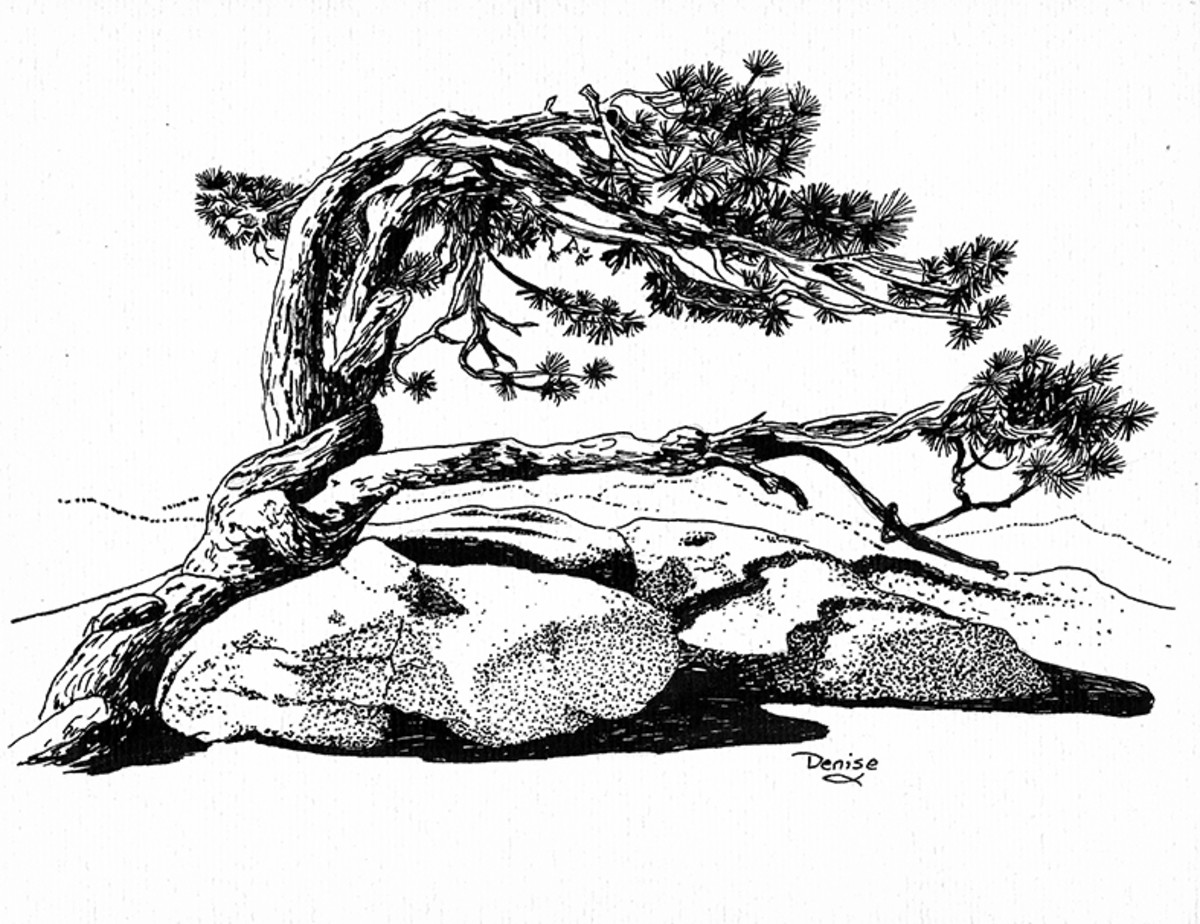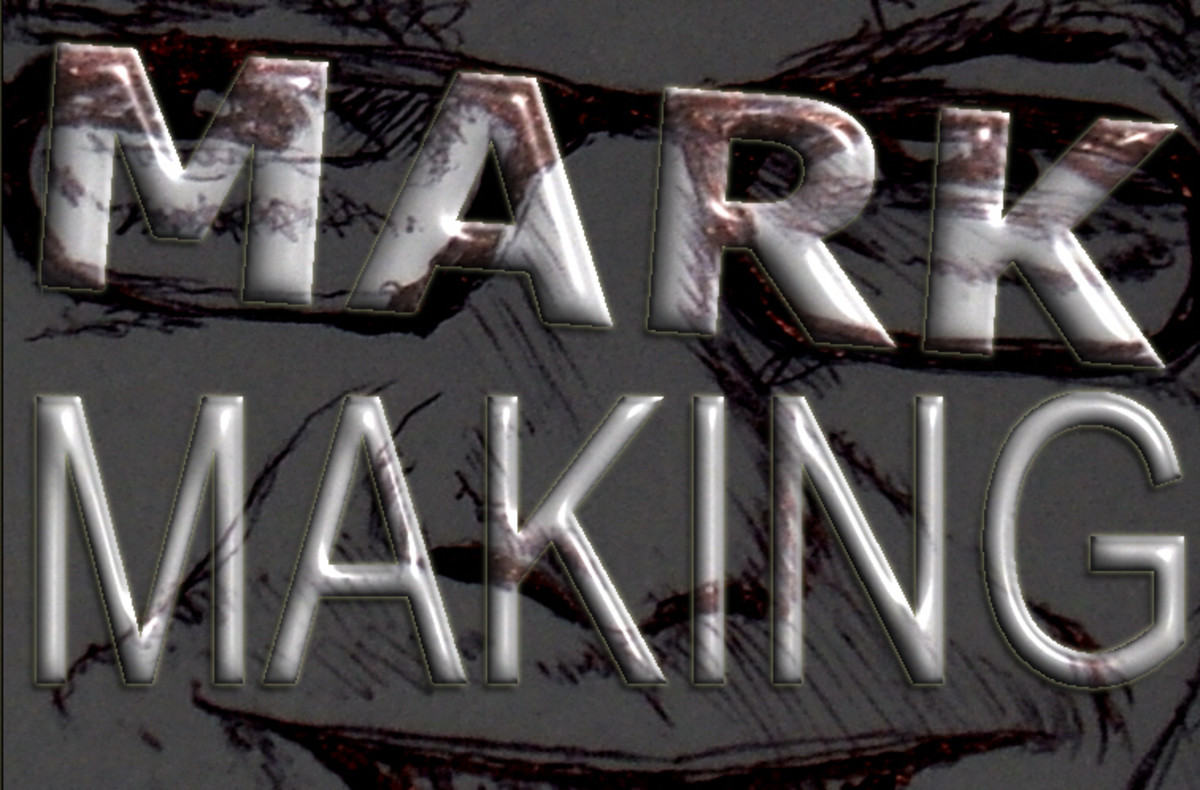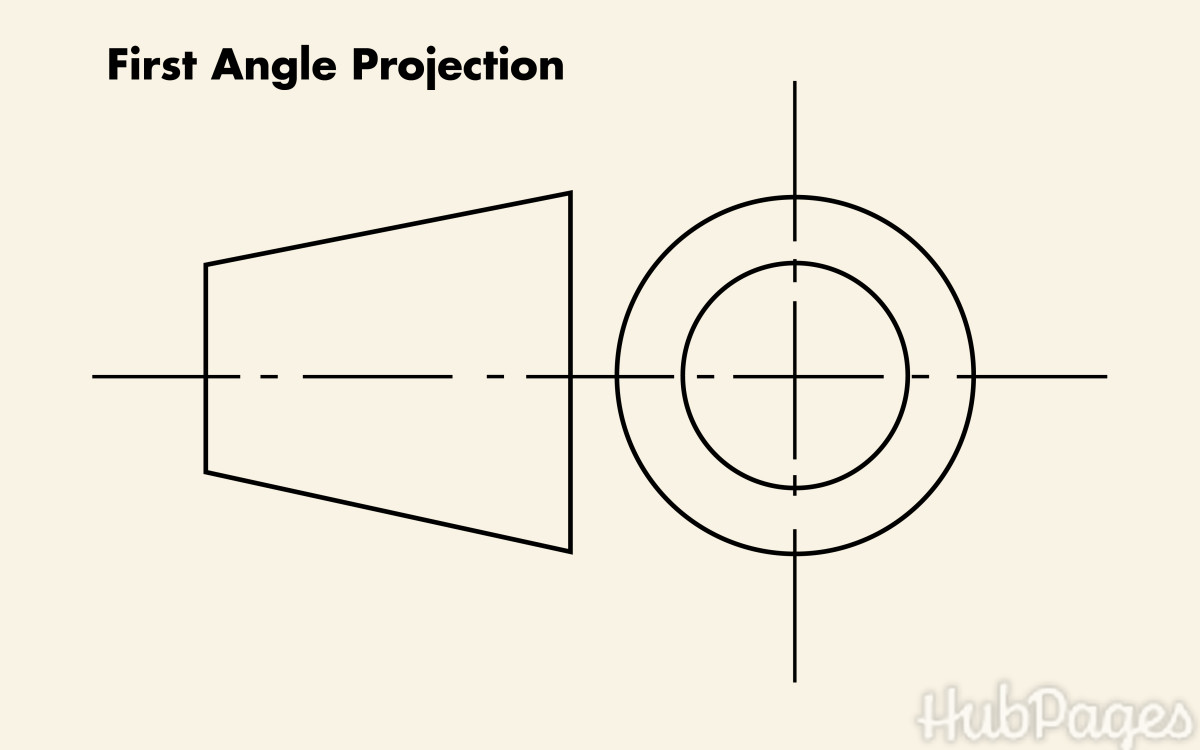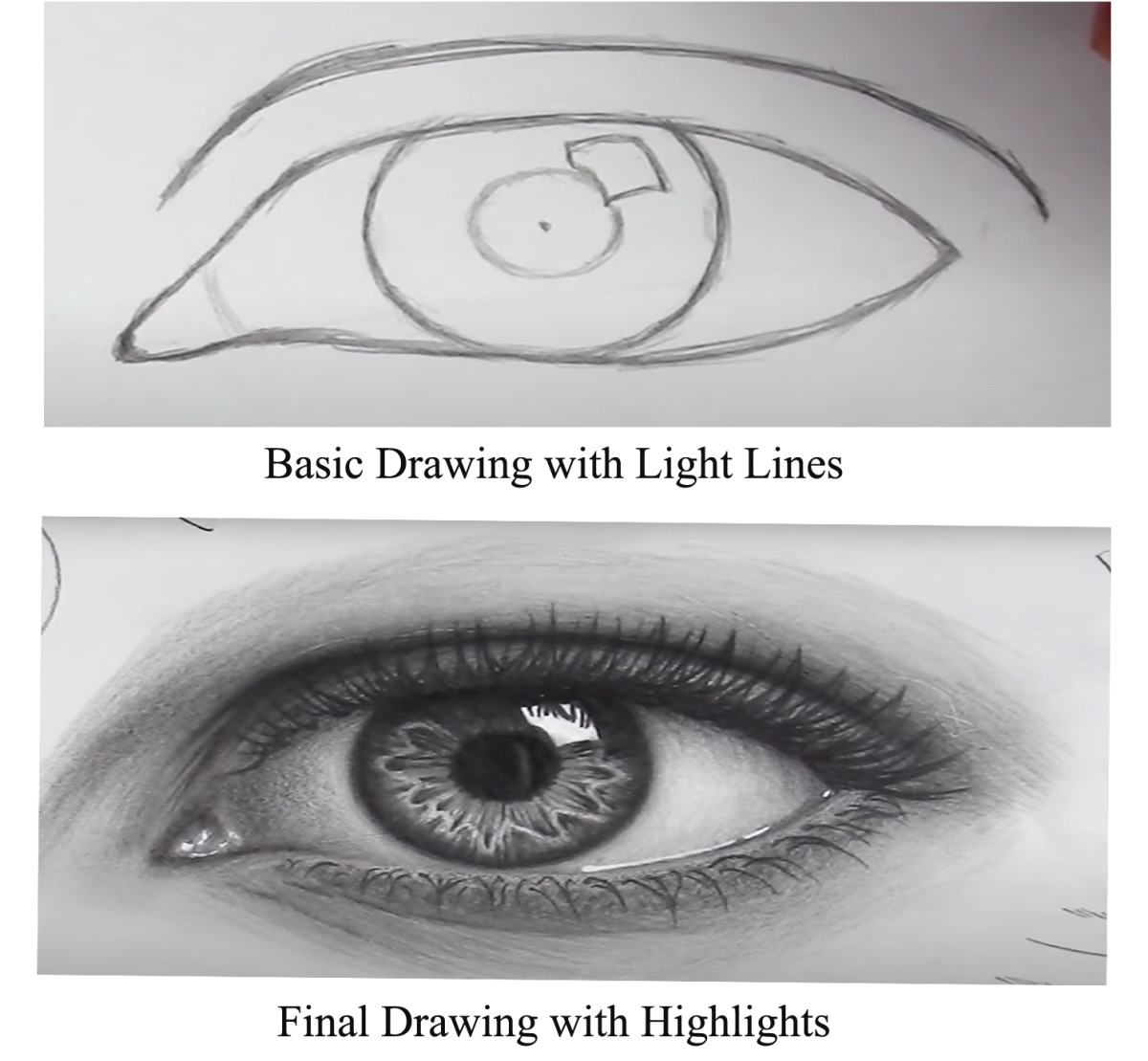- HubPages»
- Arts and Design»
- Drawing»
- Drawing Tutorials
Blind Contour Drawing: A Great Drawing Instruction Method and Warm-up Exercise
Blind Contour Drawings
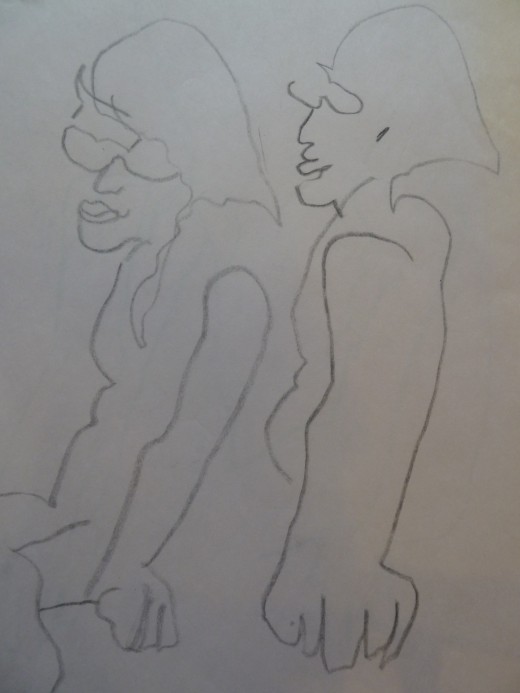
Introduction
As an artist and art instructor, I have often used a great drawing exercise that really helps artists and art students increase their proficiency and sense of comfort when drawing. Blind contour drawing is an approach to drawing that is quite unique and counter to our natural instincts when we think about drawing. In essence, the artist is setting up an obstacle for him or herself in creating an accurate drawing of an object. This sounds crazy on the surface, but this technique is very effective in drawing instruction on several levels. Let me explain...
The Method: What is Blind Contour?
The best way to describe blind contour drawing is to first define some terms. The term "contour" when used in drawing means the "edge" of an object. For example, when drawing a basketball, an artist will draw a circle to define the "edge" he or she sees when looking at the basketball. Of course, there is no actual edge to the basketball, but we perceive it as an edge, especially when we try to represent the ball in a two-dimensional format like drawing or painting. Edges can be found throughout an object when we observe it closely - not just along the outside of the item. Wrinkles in fabric can be seen as edges or contours, as can the transition between two colors or textures. So when we draw these edges, we are not just drawing "cookie cutter images," but rather complete drawings with interesting things going on on the inside of the objects as well.
So, that explains the "contour" part of this drawing technique. Now, for the "blind" part. In this drawing exercise technique, "blind" refers to the fact that the artist refrains from looking at his or her paper while executing the drawing. Instead, the artist keeps his eyes trained on the object being drawn and moves the hand holding the pencil or charcoal in response to the artist's eye moving along the contours (or edges) of the object. This sounds simple enough, but in practice it can be difficult. Our natural instinct is to look at our drawing almost to the point of obsession when we draw. The urge to look at the paper when we draw is quite strong. In fact, getting to the point where you can do the blind contour technique for even a few seconds can require practice and patience. The temptation to "peek" is very strong. It is important to persist, however; because the rewards of doing so are great. I'll explain in the next section.
The Benefits of Blind Contour Drawing
The first benefit gained from blind contour drawing is an increased ability to translate a three-dimensional object into a two dimensional representation. As the artist focuses his attention solely on the subject, his familiarity with the object increases. The artist sees details about the object he or she might not have noticed before. Also, the artist gains practice learning "the geography of the page." In other words, the eye and the hand learn to coordinate the motion of the eye following those edges we've been talking about with the motion of the drawing hand travelling over the paper. This is a hugely useful skill that can be translated to all forms of drawing and painting.
Similarly, this drawing technique can be helpful in breaking the artist's tendency to "over focus" on the product much too early in the drawing process. In drawing, especially in realistic drawing, more time should be spent looking at the subject than is spent looking at the drawing. This is especially true at the beginning of the drawing process. When one is just starting a drawing, at least 80% of the time should be spent looking at the object being drawn. Blind contour drawing helps make this practice more comfortable for the artist.
This next benefit of blind contour drawing is largely psychological. When an artist or art student is faced with the challenge of not looking at the paper while drawing, certain inhibitions and fears about drawing are conquered. Since such an obstacle to making an accurate realistic drawing is present, the inner critic is silenced and the fear of failure is cancelled out. The results of blind contour drawings are quite unusual and sometimes very appealing. This helps beak the notion that a drawing must be "perfect" in order for it to be worthwhile. This popular notion is quite untrue! The quirkiness of these drawings can be very charming and can stand on their own as a lovely work of art.
In my experience as an art instructor, I have found the blind contour technique to be very helpful in reaching reluctant or frightened drawers. As I've mentioned in a previous hub (How to Make Drawing Fun) most adults do not like to draw because of their fear of failure. This unusual drawing technique and its sometimes humorous results can really break the ice for the individual who is worried about "measuring up."
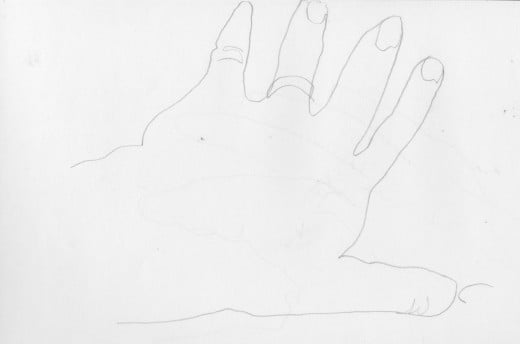
Tips for Making Blind Contour Most Effective
I'd like to share several tips for getting the most out of the blind contour technique:
• Don't use expensive materials - Since these drawings are for a warm-up exercise and the results are so unpredictable, don't waste money on fancy paper or drawing materials.
• Go big - The idea of blind contour drawing is to lessen the artist's fears about failure. Usually these fears are translated into small, tight drawings. To counter this tendency, encourage your students (or yourself) to use large sheets of paper and to try to fill the page with the drawing.
• Use "easy" materials - Since you want to discourage "peeking" at the page, make sure you use drawing materials that easily make strong marks on the paper. Something like soft charcoal or large markers are preferable to pencils or fine-line markers for this technique. If it feels like you are easily making strong marks on your paper, you will be less likely to look at the paper to check your results.
• Don't judge - Remember, these drawings are only meant for warm-up or practice. Don't apply any preconceived "standards" to these drawings. You don't have to like everything you draw. Each drawing is an exploration. Don't pressure yourself (or your students) to draw something perfectly. This tip goes for any form of drawing.
• Keep it short and sweet - Keep the time allowed for each drawing short. Thirty seconds to a minute or two is plenty of time. Any more than this will encourage peeking and/or "fussing."
• Blind contour can also become a method artists choose to make finished art for display if the method and its products resonate with the artist. In this case, the artist would want to choose better materials to create the drawings, like acid-free paper and fade resistant inks, etc.
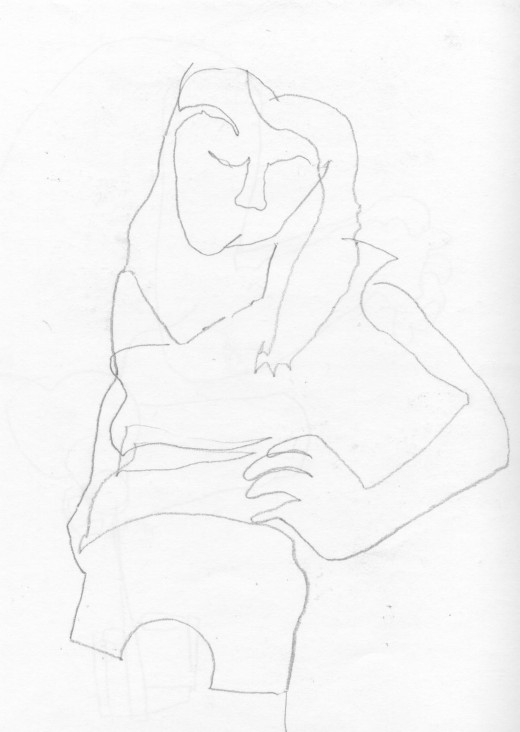
Conclusions
Blind contour drawing is a great technique to use to help artists warm up before more formal drawing or other art projects. It is also a great skill building exercise for artists of all levels of experience.
This technique is also helpful in getting reluctant artists to break free from their inner critic and enjoy the wonderful world of art. This, I think, is the best and highest purpose of the technique.


